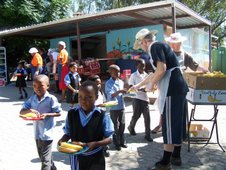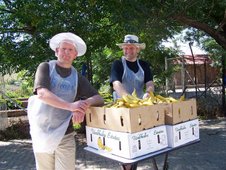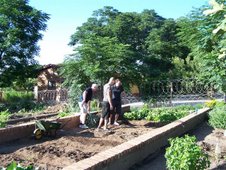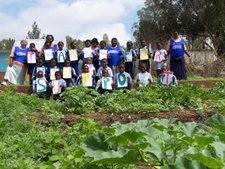HERBS
We have a small hedge of an indigenous plant which bears small clusters of round black berries. A visitor to the school garden pointed these berries out to Shirley last year on a small plant which had grown wild, and said how tasty they were. Shirley was hooked! She remembers a friend’s mother making a delicious jam from the berries many years ago but had never before seen them growing in the wild. The berries were left to seed and the resulting hedge now has a lovely crop of fruit which Maaike and Shirley like to eat (the fruit has a liquorice taste), but Milly says ‘it’s an acquired taste’… so not to everyone’s liking then! I was looking up ‘ringworm’ in Margaret Roberts’ “Indigenous healing plants” because so many of the children have ringworm and I hoped we had some plants in the herb garden with which we could treat it. The first plant mentioned is Solanum Nigrum or Nastergal and this is the name of this berry bush!! Apparently the green berries are poisonous (the ripe fruit is not toxic) and it is these green berries that are used to make a paste. This is then frequently applied to the affected area. The leaf of the Solanum Nigrum can also be cooked with spinach – the leaves and the fruit contain fairly high quantities of vitamin C.
We are trying to encourage the women who work in the garden to make use of the herbs to treat ailments. In January, Margaret used some Wilde Als to treat the after effects of a viral infection and was very pleased with the resulting well being. It was also Margaret who applied a whole clove (the spice) to a sore, loose tooth. The pain disappeared she said, and she forgot about her tooth when she was eating her lunch. To her great joy, the tooth came out when she was chewing! She was delighted that she didn’t have to pay a dentist to extract the tooth for her.












No comments:
Post a Comment